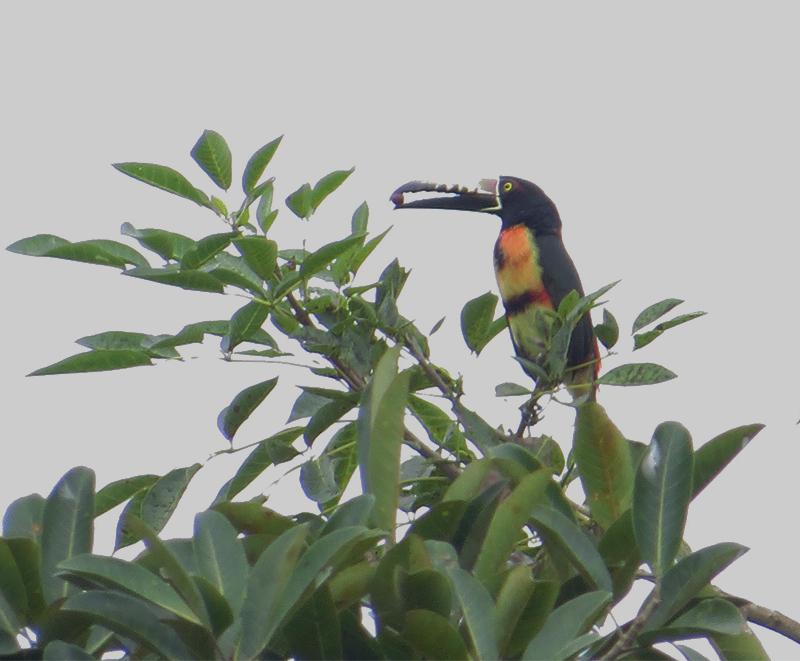Liliana Cadavid Florez
My research studies the incidence of landscape structure around isolated trees on bird and seed movements, across neo-tropical pastures of Mexico, in order to improve landscape connectivity.

Pteroglossus torquatus.
In highly fragmented landscapes, connectivity loss has detrimental consequences on ecological processes leading to major problems in the conservation of native fauna and flora, and the ecosystem services they provide. Currently, the primary activity in the lowland coastal plain of Veracruz Mexico is cattle ranching and agriculture. The original tropical forest has been largely transformed, and the few forest remnants that persist to date are embedded in a matrix comprised of extensive pastures and crop fields. Isolated trees in pastures are landscape elements that provide structural complexity to the matrix, increasing landscape permeability. These elements can play a fundamental role in biodiversity conservation and the maintenance of ecological processes. However, there is a disinformation of how the spatial arrangement of arboreal elements could improve connectivity in fragmented landscapes. Therefore, it is important to determine the spatial pattern landscape around arboreal elements, which can provide an optimal arrangement to ensure the maintenance of ecological processes, such as seed dispersal and connectivity for birds.
I will assess the effects of landscape structure, around isolated Ficus cotinifolia trees, on bird visitation frequency and diversity, as well as on the abundance and richness of zoochorous seeds deposited beneath these trees. I aim to increase our understanding of how bird species composition and the frequency of their visits to isolated trees change in response to the spatial structure of the surrounding of the trees, and how these, in turn, affect seed dispersal and the potential re-establishment of forest cover.
This study will constitute a first step to increase the awareness of the value of isolated trees within pastures for the conservation of biodiversity and the maintenance of connectivity in fragmented landscapes. I will provide concrete recommendations for conservation strategies and management practices of pasture trees that ensure sustainable farming, a potentially profitable forestry, better quality of life for the local people, as well as the persistence of local arboreal and bird’s species and the maintenance of landscape connectivity in highly fragmented landscapes. Through the realization of planned workshops, I will display the importance of conservation of land matrixes supported by my research. Finally, I aim to achieve that local people and authorities would promote optimum management of trees immersed in their pastures to increased landscape connectivity, and thus allow seed dispersal to sustain local diversity and a level of feasible restoration without broad changes to their everyday activities.